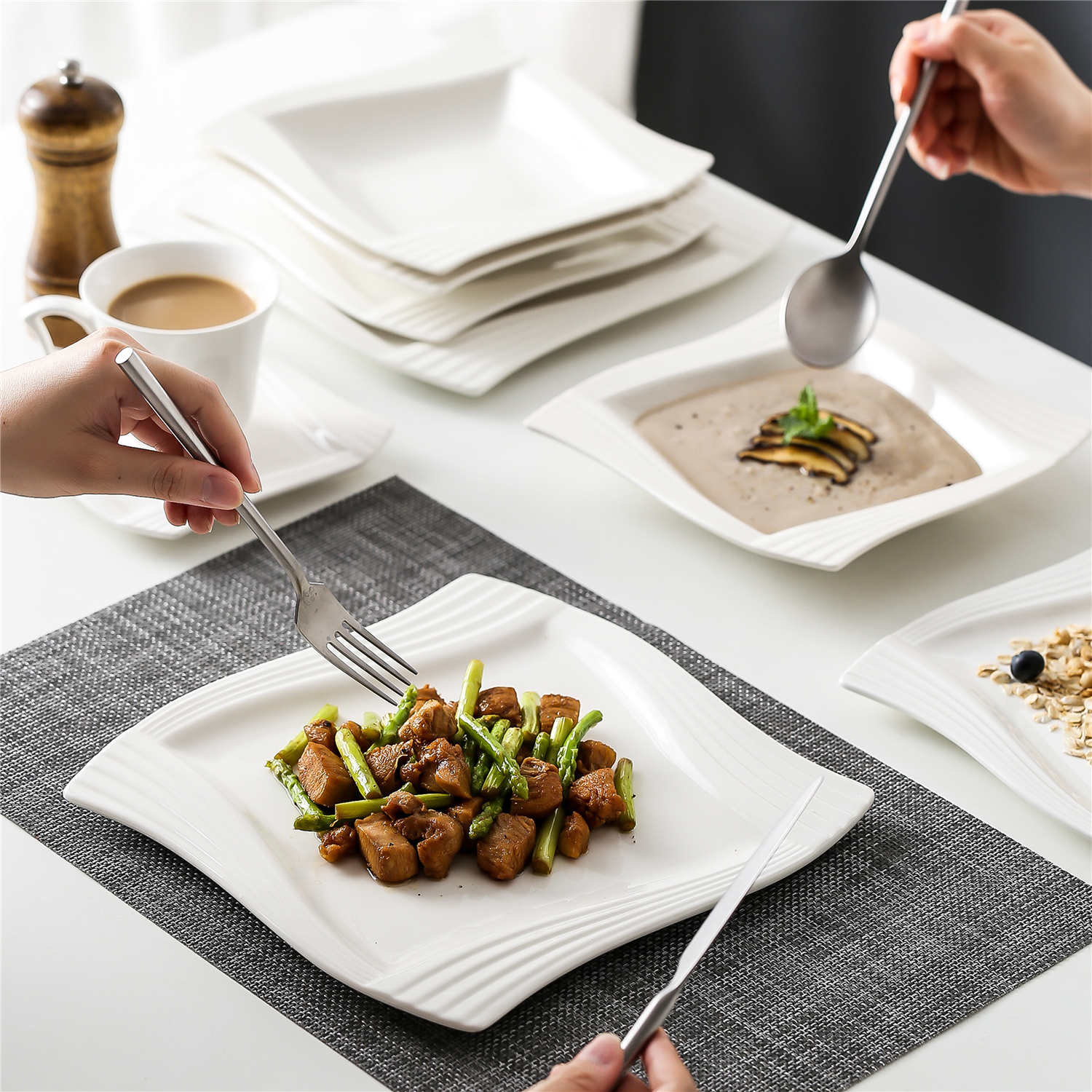Discover the Secret to Elevating Your Dining Experience with the Perfect Dinnerware!
When it comes to dining, the experience goes beyond just the food served. Dinnerware sets play a crucial role in enhancing this experience, transforming a simple meal into a delightful occasion. From elegant dinner parties to casual family gatherings, the right dinnerware can set the tone and elevate the entire dining atmosphere. With a plethora of materials, styles, and designs available, choosing the perfect dinnerware set can feel overwhelming. However, understanding the different types available and their appropriate uses can help you make an informed decision. In this article, we’ll explore how the right dinnerware can not only complement your culinary creations but also reflect your personal style.

Understanding Dinnerware Sets
At its core, a dinnerware set is a collection of dishes used for serving and eating food. Typically, a complete set includes various components such as plates, bowls, cups, and saucers, each serving a specific purpose. For instance, dinner plates are generally larger and are used for main courses, while salad plates are smaller and perfect for appetizers or side dishes. Bowls come in different sizes for soups or desserts, and cups and saucers are essential for beverages. The significance of dinnerware extends beyond mere functionality; it influences the dining experience in various contexts. For casual meals, a simple, durable set may suffice, while formal occasions might call for elegant china or fine porcelain. A well-curated dinnerware collection not only serves practical purposes but also enhances the aesthetic of your dining table, inviting guests to enjoy the meal even before tasting it.
Types of Dinnerware Materials
Dinnerware sets can be crafted from various materials, each offering unique benefits and drawbacks. Porcelain, known for its strength and elegance, is a popular choice for formal dining due to its delicate appearance and durability. Stoneware, on the other hand, is thicker and more robust, making it ideal for everyday use. It retains heat well and is often available in rustic designs that add charm to any table setting. Earthenware, while less durable, has a warm, handcrafted look that can be appealing for casual meals or homey gatherings. Lastly, melamine is a lightweight, shatterproof alternative that’s perfect for outdoor dining or families with young children. While it may not have the same aesthetic appeal as traditional materials, its practicality cannot be overlooked. When choosing dinnerware, it’s essential to weigh the pros and cons of each material to find the one that best suits your lifestyle and aesthetic preferences.
Choosing the Right Dinnerware Set
Selecting the right dinnerware set involves considering personal style, occasion, and functionality. Start by assessing your dining habits and the types of meals you frequently prepare. If you often host formal dinners, investing in a classic set with elegant patterns and neutral colors can be a great choice. For casual family meals, opt for vibrant colors or fun designs that reflect your personality. Additionally, think about the number of pieces you’ll need; a smaller set may suffice for everyday use, but if you entertain often, a larger set with serving dishes might be necessary. Pay attention to the color and design; contemporary styles often feature sleek lines and minimalistic designs, while classic sets may have intricate patterns or vintage elements. Ultimately, your dinnerware should resonate with your personal taste and complement the overall aesthetic of your home.
Caring for Your Dinnerware
Proper care of your dinnerware is essential to maintain its beauty and longevity. Different materials require specific care instructions to prevent damage. For porcelain and stoneware, hand washing is often recommended to avoid chipping; however, many modern sets are dishwasher-safe. Always use a gentle cycle and avoid abrasive scrubbers. Earthenware should be handled with care, as it can be more fragile; it’s best to wash it by hand and avoid sudden temperature changes that may cause cracking. Melamine, being more durable, can typically withstand the dishwasher, but it’s crucial to check for any specific care guidelines. When storing your dinnerware, place felt pads between plates to prevent scratching, and stack cups to save space. By following these care tips, you can ensure that your dinnerware remains beautiful and functional for years to come.
Creative Ways to Use Dinnerware Sets
Dinnerware sets are not just for serving meals; they can be creatively repurposed for various occasions. Consider using smaller plates for serving appetizers during a cocktail party or utilizing bowls for presenting colorful salads or desserts. Mixing and matching different sets can create an eclectic table setting that sparks conversation among guests. Additionally, dinnerware can serve decorative purposes; use a beautiful platter to display fresh fruit or arrange decorative items in bowls for a unique centerpiece. Personal anecdotes from friends highlight how they’ve utilized their dinnerware in imaginative ways, transforming ordinary gatherings into memorable experiences. By thinking outside the box, you can maximize the use of your dinnerware beyond traditional dining.
Enhancing Your Dining Experience with Dinnerware
In summary, dinnerware sets are more than mere dishes; they are integral to enhancing your dining experience. Understanding the various components, materials, and proper care techniques is crucial in selecting the perfect set that reflects your style and suits your needs. Whether you’re hosting a formal dinner or enjoying a casual meal, the right dinnerware can elevate your table and bring joy to your culinary creations. So, take the time to explore the world of dinnerware and invest in sets that resonate with your tastes and enhance your dining experiences, creating cherished memories with every meal.








